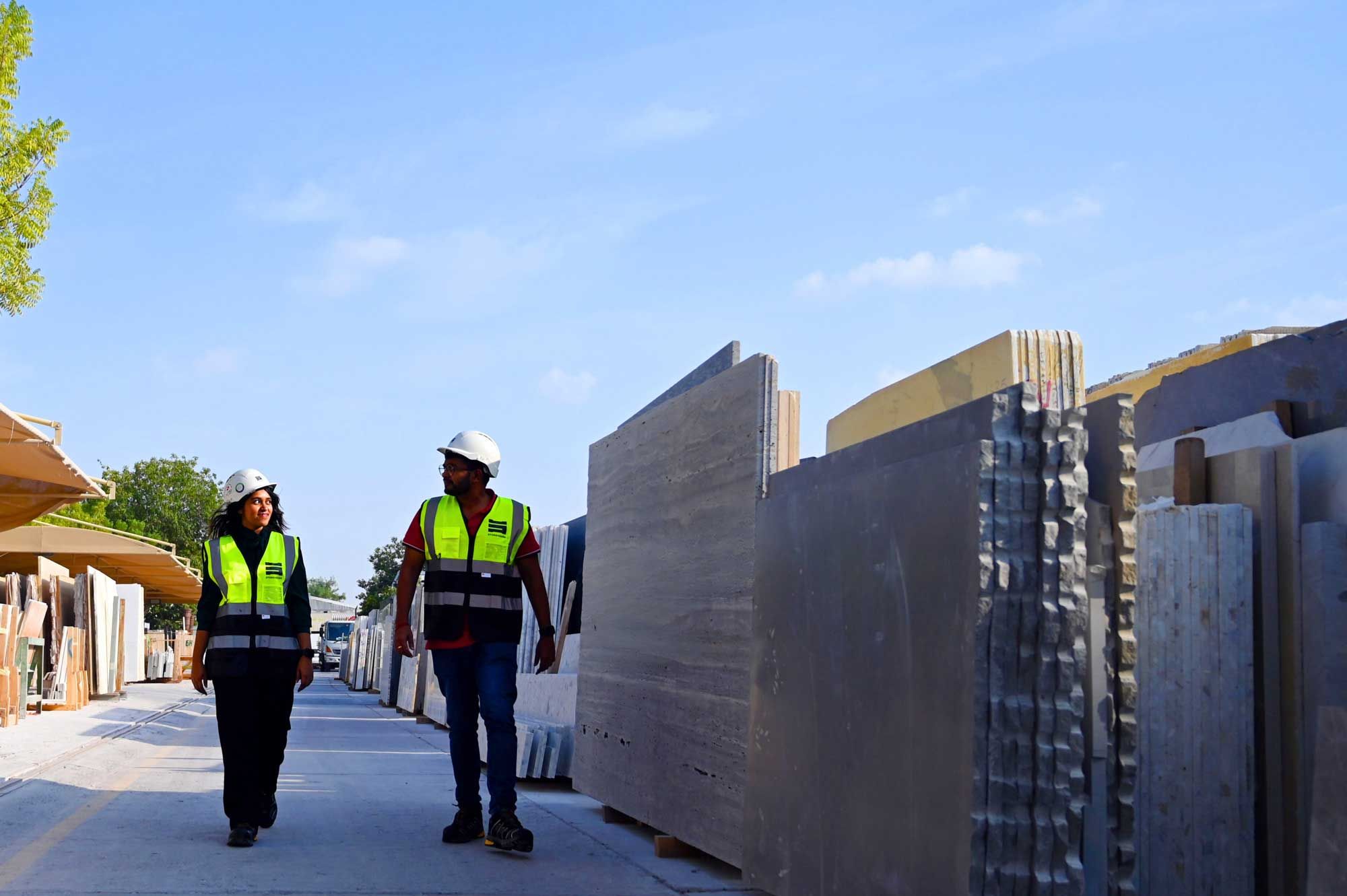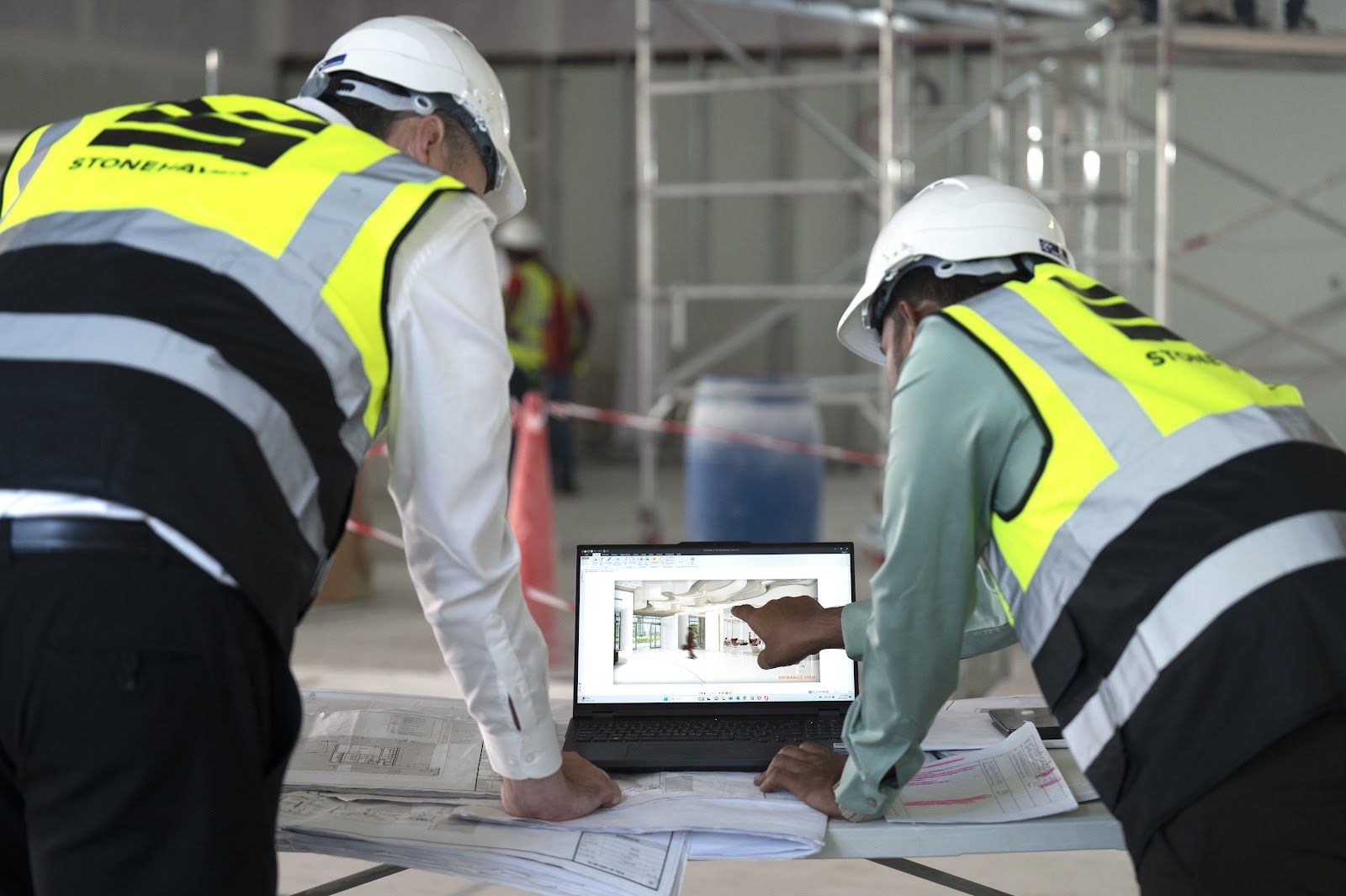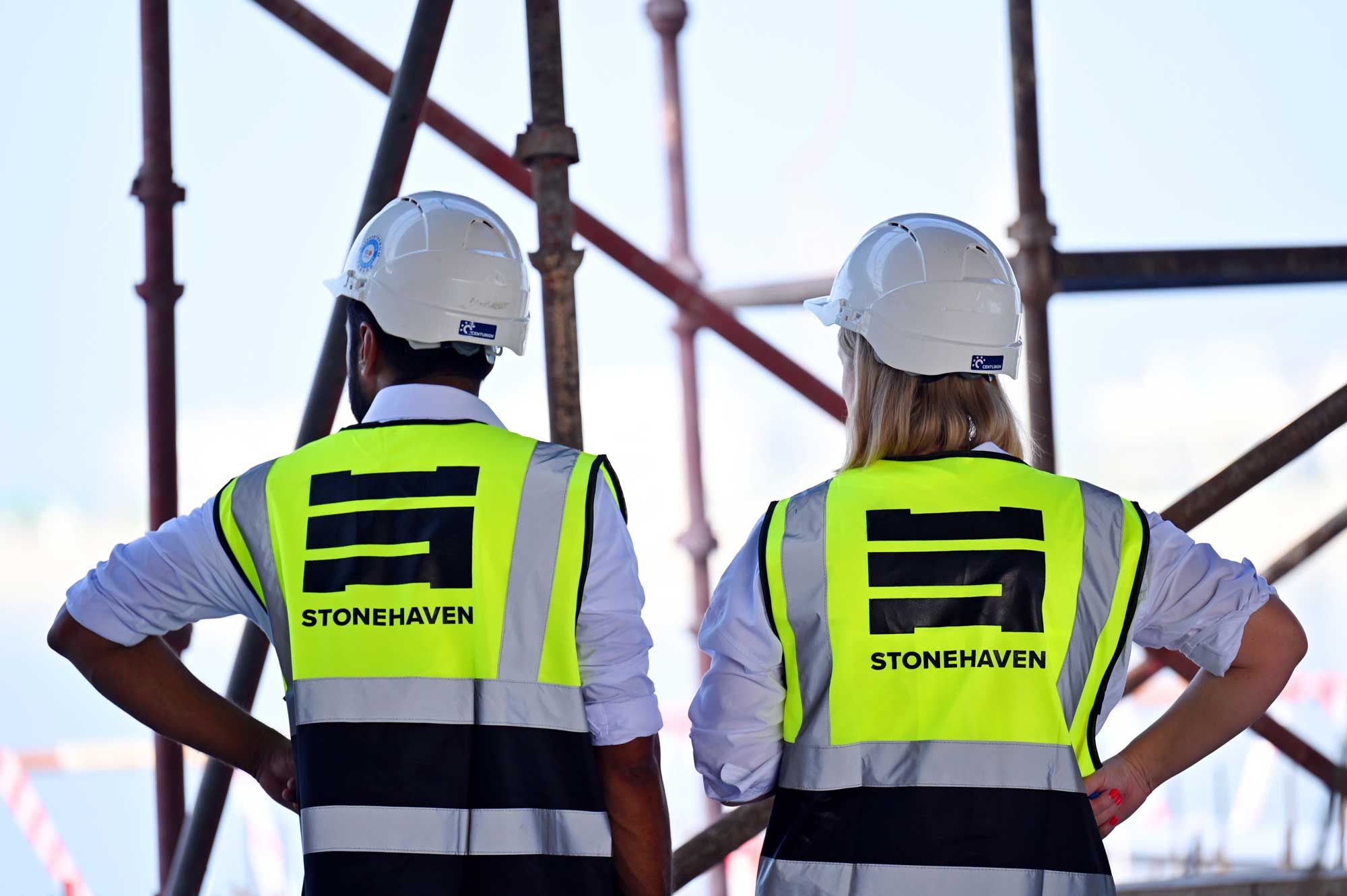In construction, success hinges on execution. And execution hinges on people.
No matter how precise your drawings, how comprehensive your programme, or how innovative your approach, the reliability of your subcontractors can either keep the gears of your project running or bring them grinding to a halt.
Finding and working with a reliable subcontractor isn’t just about filling a gap in labour. It’s about partnership. It's about trust, delivery, and shared accountability. Yet in a saturated market filled with companies looking for subcontractors or contractors looking to expand their base, the question remains: how do you identify the right one?
This guide is built to help you master the process. Whether you're a general contractor wondering how to find subcontractors for my business or a project manager questioning how to verify a subcontractor, we break it down step by step.
What Are the 3 Factors That Can Determine if You Are a Subcontractor?
Before identifying others, it helps to understand what classifies someone as a subcontractor. With GCC construction contract awards now climbing past US $264 billion and projected to grow at ~5% annually, selecting dependable subcontractors becomes a strategic necessity as project volumes surge.

According to standard construction contract law and HMRC guidelines, a subcontractor is usually defined by three core factors:
-
Control Over Work Execution: Subcontractors manage how and when they deliver services. They typically operate independently from the contractor’s internal workforce.
-
Provision of Tools or Materials: Subcontractors often use their own equipment and resources to fulfil tasks. This demonstrates a level of autonomy that is not typically expected from employees.
-
Risk and Reward: They bear the commercial management of the job. If things go wrong, they rectify the problem at their own cost, and if they perform well, they keep the profit. This level of exposure defines their commercial role in a construction contract.
Understanding these distinctions is key when verifying if someone qualifies as a subcontractor versus an employee or supplier. These criteria also help in drafting contracts that are compliant with employment and tax regulations.
How Do You Find Good Subcontractors?
Finding good subcontractors is often considered an art as much as a science. Whether you’re looking to find subcontractors or searching platforms to uncover the best place to find subcontractors, here's a comprehensive approach:
- Referrals and Word of Mouth: Still the most powerful source. Speak to fellow contractors, consultants, and clients. Word of mouth ensures that the subcontractors have a track record of trust and delivery.
- Digital Platforms and Directories:
ProTenders – Widely used across the UAE and KSA; lists contractors, subcontractors, and suppliers with full project history.
BNC (Business News Construction) – Includes detailed project databases and contractor listings across GCC.
Zawya Projects – Provides leads on active projects and major players, including subcontractors.
YellowPages UAE / Saudi – Useful for local subcontractor contact data by category.
Bayt / Naukrigulf – For companies advertising subcontractor and trade-based job requirements.
LinkedIn Construction Groups (UAE & GCC) – Highly active communities where GC-subcontractor partnerships are formed. - Construction Project Databases: Some platforms allow you to search by trade, project size, or location. They include reviews, ratings, and certifications.
- Site Visits and Project Walkthroughs: Observe subcontractors at work on live projects. This gives insight into their site management, adherence to safety protocols, and craftsmanship.
- Trade Shows and Industry Events: These provide both informal interactions and formal showcases. Meeting subcontractors face-to-face often speeds up the evaluation process.
- Online communities such as Reddit often have forums where people discuss how to identify reliable subcontractor, sharing reviews and cautionary tales.
How Do You Evaluate a Subcontractor?
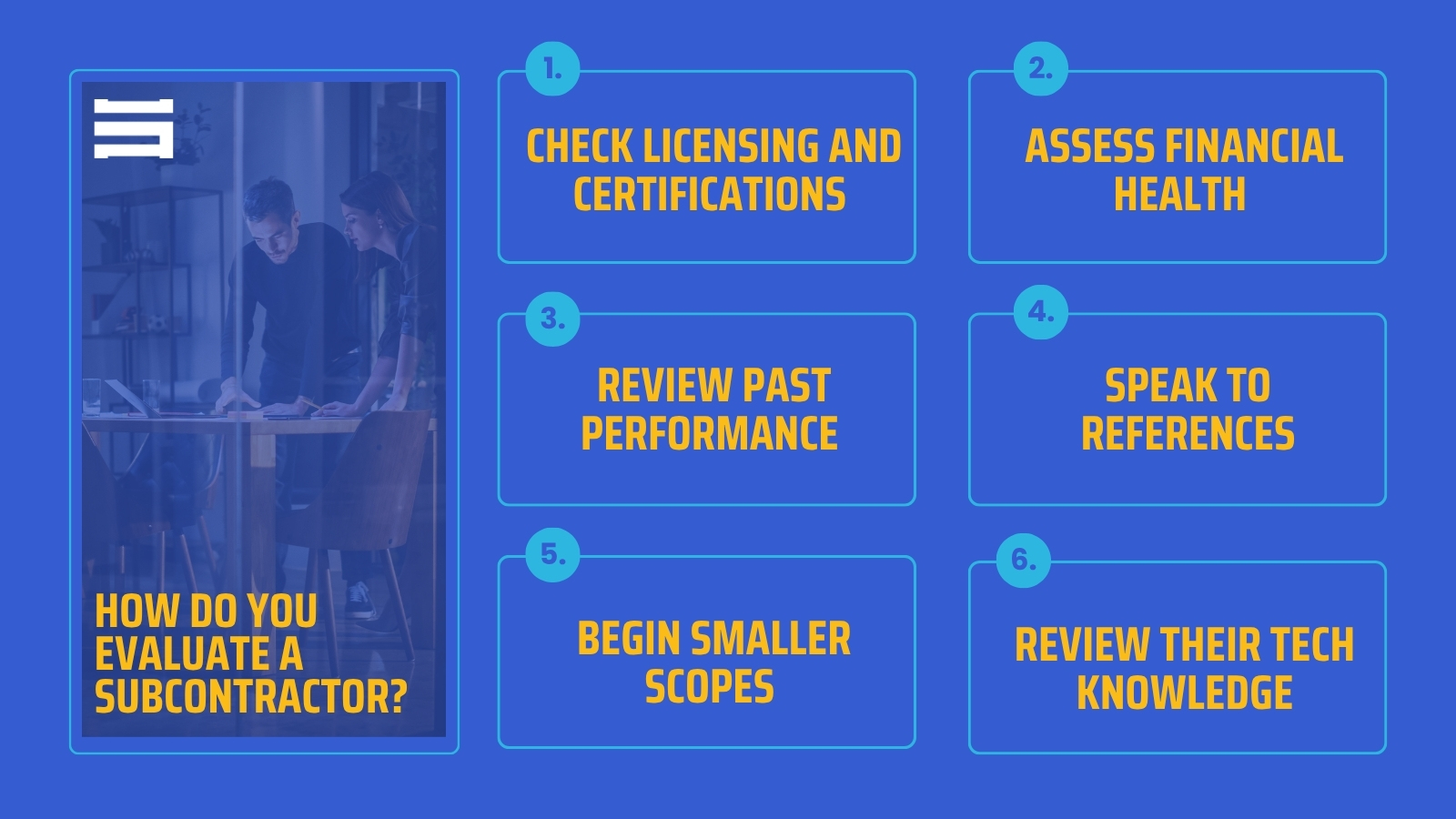
Once you've found a potential subcontractor, the next challenge is verifying if they are a reliable subcontractor or just good on paper. Here's how to systematically assess them:
-
Check Licensing and Certifications
- Confirm trade-specific licenses and insurance coverage.
- Check their certifications for safety, quality, and compliance (e.g., ISO 9001).
- Request an experienced portfolio or project list with detailed references.
-
Assess Financial Health
- Run credit checks.
- Ask for proof of bonding capacity, which shows whether they can handle project risks.
- Review their payment track record with past clients and suppliers.
-
Review Past Project Performance
- Look at timelines, safety metrics, litigation history, and how they manage change orders.
- Compare their historical data to industry benchmarks.
-
Speak to References
- Call their recent clients or general contractors.
- Ask about delivery, professionalism, dispute resolution, and quality of work.
-
Begin Smaller Scopes
- Start with small scopes. It’s the most reliable way to identify subcontractor reliability before committing to larger projects.
-
Review Their Technology Usage
- Do they use the latest project management tools?
- Are they comfortable collaborating through cloud-based platforms like Procore or Autodesk?
If you’re wondering how to determine if someone is a subcontractor, use contracts, invoices, and job scopes as supporting documentation.
What Are the KPIs for Subcontractor Performance?
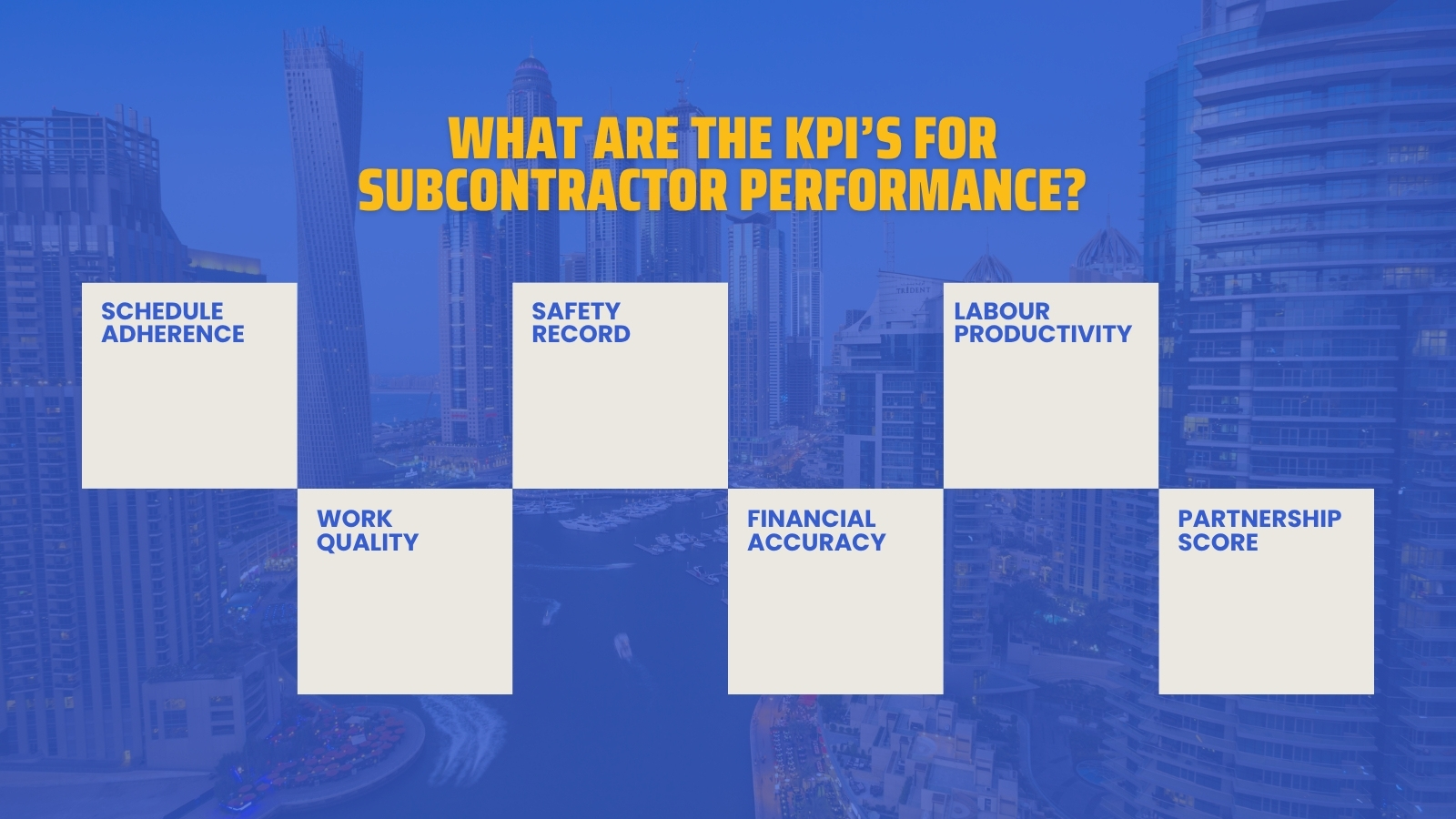
Key Performance Indicators (KPIs) ensure accountability and give measurable insights into whether you’ve chosen a reliable subcontractor. Here are the main KPIs used:
-
Schedule Adherence: % of tasks completed on or ahead of time.
-
Work Quality: Number of reworks, defect reports, and punch list items raised.
-
Safety Record: Number of incident reports, near-misses, and HSE violations.
-
Financial Accuracy: Frequency of change orders and discrepancies in billing.
-
Labour Productivity: Work completed per labour hour or per shift.
-
Collaboration Score: Feedback from main contractor, cost consultants, and client based on attitude, adaptability, and professionalism.
Tracking these metrics allows for long-term performance evaluation and helps determine whether a subcontractor deserves repeat work.
How Do You Build a Good Relationship with Subcontractors?
Strong relationships with subcontractors lead to repeat business, smoother workflows, and lower risk. Here are best practices to cultivate those relationships:
-
Clear Expectations
- Use detailed scopes of work, set project milestones, and define deliverables.
- Share updated drawings, specifications, and RFIs as early as possible.
-
Prompt Payment
- Pay on time and fairly.
- Delayed payments erode trust and increase financial stress for subcontractors.
-
Open Communication
- Schedule regular coordination meetings.
- Encourage transparent reporting of delays, issues, and site conditions.
-
Support Their Growth
- Offer feedback, invest in training, and share learnings from completed projects.
-
Offer Long-Term Opportunities
- When projects are completed and the clients are satisfied, then it can build trust and reduce onboarding time.
-
Respect and Recognition
- Acknowledge and reward excellent performance, especially when they go beyond scope.
Building good relationships ensures subcontractors will prioritise your projects and help you navigate inevitable site challenges.
How Do You Find Subcontractors for New Projects?
If you’re scaling your construction firm and wondering how to find subcontractors as a general contractor, consider these tips:
1. Use a CRM for Subcontractors
Gone are the days of managing subcontractor contacts through spreadsheets and business cards. A Construction CRM (Customer Relationship Management) system or portal is essential for tracking who’s worked with you, how they’ve performed, and whether they’re suitable for future work.
With a good CRM, you can:
-
Log contact information and categorise by trade, region, or company size.
-
Rate past performance using a simple scoring system (e.g., quality, timeliness, cooperation).
-
Track communication history to avoid duplicate outreach or miscommunication.
-
Automate reminders for requalification or upcoming tenders.
For example, if a subcontractor did outstanding MEP work on a recent hotel project in Dubai, you could tag them as a preferred vendor for hospitality builds in your CRM — ready to re-engage when the next RFP hits.
Systems like Buildertrend, Procore, or even custom templates work well, and over time this database becomes a strategic advantage, giving you instant access to quality trades when project timelines tighten.
2. Maintain a Prequalification Process
Before inviting any subcontractor to quote, implement a standardised prequalification form or digital checklist. This allows you to verify:
-
Trade licence validity
-
Insurance and HSE compliance (especially safety performance on past projects)
-
Financial stability and bonding capacity
-
Workforce size and labour availability
-
Relevant project experience, references, or case studies
The aim here is to avoid surprises like discovering mid-project that a subcontractor can’t meet your insurance thresholds or is overstretched with other commitments.
Keep your form clear, digital, and repeatable. You can even tier prequalification levels (e.g., Basic, Approved, Preferred) depending on how many successful projects they’ve completed with you.
By having this process in place upfront, you are not only de-risking project execution but also presenting your firm as a professional and selective GC that top subcontractors want to work with.
3. Create a Digital Onboarding Pack
Once you’ve identified a subcontractor you’d like to work with, onboarding them properly can make all the difference. A Digital Onboarding Pack standardises expectations from day one and ensures they align with your delivery standards.
Your pack might include:
- Non-Disclosure Agreement (NDA) and standard subcontractor agreement
- Project-specific safety manual and emergency protocols
- Quality control procedures, submission formats, and approval workflows
- Payment milestones and documentation guidelines
- Site logistics such as access, working hours, and material delivery rules
You could host this pack on a secure cloud folder or intranet portal, allowing the subcontractor to access updates, submit forms, and review requirements any time.
Clear onboarding isn’t just about documentation, it sets the cultural tone for collaboration, professionalism, and proactive issue resolution. In markets like the UAE or Saudi Arabia where multicultural teams work at speed, clarity at the start avoids costly disputes later.
These efforts make your business more attractive to reliable subcontractors and set the tone for structured project delivery.
Conclusion
Knowing how to identify a reliable subcontractor in construction isn’t just about avoiding project failures, it’s about building a system that elevates every job you deliver. From first impressions to KPI tracking, every stage of the process matters.
By following best practices, applying measurable standards, and creating mutual trust, you not only improve project performance but become a preferred contractor in a competitive market.
Whether you're searching for how to identify reliable subcontractor, researching how to find reliable contractors, or networking with companies looking for subcontractors, this framework gives you the tools to make smart, strategic decisions.
Featured Perspective
This article includes contributions and insights from Ravindu Jayasundara, Cost Manager at Stonehaven whose project experience in the industry has shaped much of this discussion.
Ravindu is a Quantity Surveyor with over four years of hands-on experience in the construction industry. His portfolio spans diverse projects, with a focus on cost estimation, contract administration, and construction management. Known for his analytical mindset and precision, Ravindu consistently delivers cost-efficient solutions while driving value across every stage of the project lifecycle.
About us
At Stonehaven, we work alongside contractors and subcontractors across the UAE and GCC to deliver complex projects on time, within budget, and to the highest quality standards.
Our tailored prequalification processes, subcontractor management systems, and risk-based vetting frameworks ensure that every trade partner is aligned with your project’s scope, value, and delivery expectations.
Let’s build with confidence, together.











